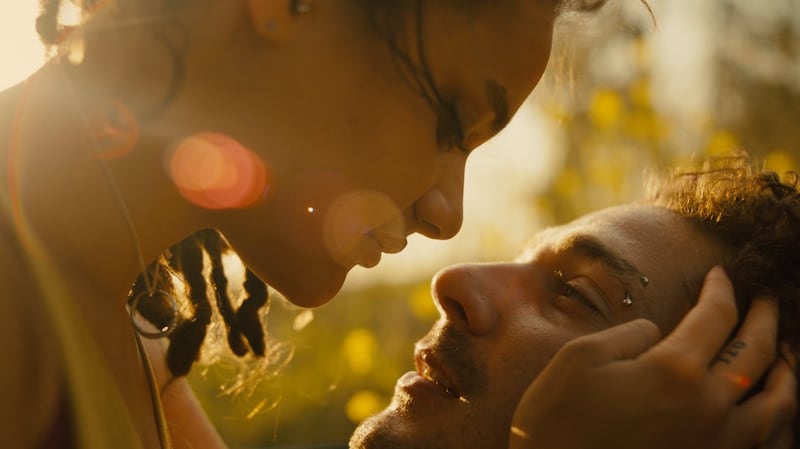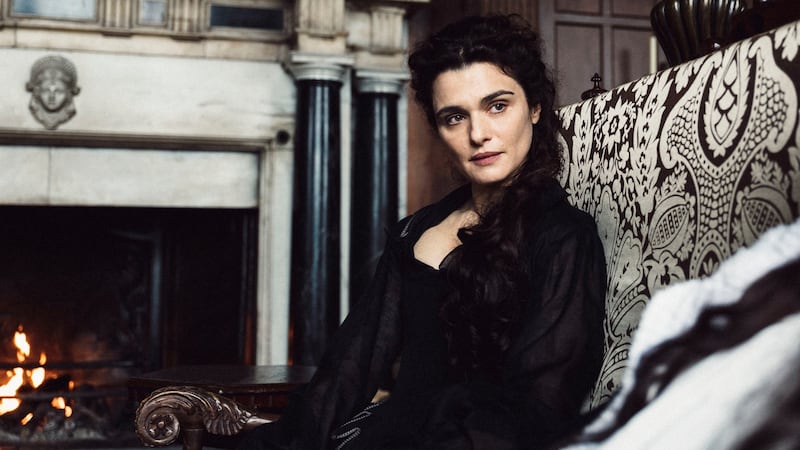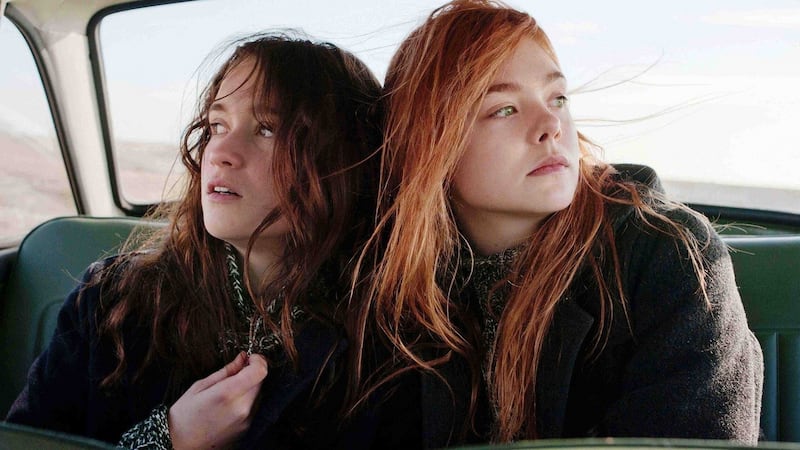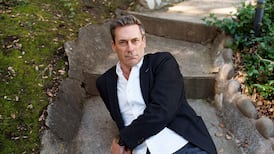There's a scene in Andrea Arnold's 2016 film American Honey, where Shia LaBoeuf's character, Jake, is exhausted and exasperated after a long afternoon hustling, selling magazines door to door.
Sasha Lane’s character, Star, the lead, laughs in his face. She is backlit by magic hour light, and then what looks like the beginnings of a confrontation, flips. The camera follows them, almost itself jostling, as they run past the suburban homes, lens flare sparkling through the trees, before they collapse on to the grass.
As they kiss, the shot elbows its way in for a closer look, purposefully sloppy, rough, an accentuated error. Then we get two shots of sprinklers going off, then back to the kiss, then the sunlight blasting through the foliage of trees that are beginning to catch the type of wind that precedes a storm.
This is not even the best sequence in the film. In fact, it could be easily overlooked. It’s so good, that it just “is”. The film washes over you with all its moments of uncertain beauty that oscillate between languid and heightened.
American Honey was the fifth Arnold film cinematographer Robbie Ryan worked on, and one of several moments that established him as one of the best in the game.

Ryan is a Dubliner, a graduate of that great incubator of creative people with an edge in Dún Laoghaire now known as IADT. The Yorgos Lanthimos film, The Favourite, is a film that compels its fans to clasp the hands of those who haven't seen it, look them straight in the eye imploring, "you have to". It is also a film that has earned Ryan his first Academy Award nomination.
“Howya! I forgot we were meant to be talking!” For a film department that requires a lot of organising, Ryan is infectiously laid back. Speaking from London, he begins with a jovial apology, and precedes to chat away without even an inference that he might be quite busy at the moment. And he is, working on both a Sally Potter film and a Ken Loach film, and whatever else he has coming up.
“It’s lovely to have people come up and go, ‘I saw The Favourite!’,” he says, regarding how treasured the film instantly became, “Or getting texts from people really genuinely saying how much they enjoyed it and liked it, so that’s really rare. I’ll never say no to that, it’s fantastic to see people respond to it. They respond to him [Yorgos]. His films are really good, you know? I think it’s thrown him a bit that it’s being received so well, because he’s used to being a bit of an outsider in the filmmaking world. So that kind of intense amount of exposure is something that’s unnerving in its own sense. But it’s all good.”
Ryan says he has never had to do so many interviews, but immediately pivots to how much more draining it must be for the cast (Olivia Colman, Emma Stone, and Rachel Weisz are all nominated for Oscars) and its Oscar-nominated director, Lanthimos. The film is also nominated for Best Picture, Best Original Screenplay, Best Production Design, Best Costume Design (with Sandy Powell looking for a remarkable fourth Oscar) and Best Film Editing.
The competition is stiff, primarily from Alfonso Cuarón for the much-lauded and massively marketed Roma, and Lukasz Zal's extraordinary work on Cold War – what that film lacks in story, it makes up for in jaw-dropping Academy ratio shots. And it's not as if Matthew Libatique fluked his way into the category with his rhythmic and electric photography of those evocative musical performances in A Star Is Born – particularly the opening number. Then there's the six-time nominee Caleb Deschanel.
That said, Ryan deserves it as much as Cuarón or Zal. But he’d be the last person to say that. If he doesn’t win this weekend, he can at least take home the award for Most Chilled Out Nominee. Ryan is at the top. He has achieved things in his career most cinematographers can only dream of. He has established collaborations with some of the most interesting filmmakers around – Arnold, Ken Loach, Sally Potter, Noah Baumbach. His work is eclectic, cool, gorgeous. But what is especially heartening is his attitude. Ryan seems to be totally adverse to egotism or the self-congratulatory funfair of awards. It’s all about the work.

Let's go back to Dún Laoghaire. Ryan was there in the early 1990s. A summer in New York, sleeping mostly on a roof, before his final year, inspired him. He characterises his graduation film as "Capital A, capital N, capital G, capital S, capital T. ANGST!" His peers were big into Andrei Tarkovsky. Everyone was titling their films with one word. Even at that stage, he was sailing against the tide, calling his film Twenty Second Plastic Love Affair – "It was the longest title I could come up with… I did me graduation film and was out into the wide world trying to figure out what to do next. It wasn't like it is nowadays where you have multitudes of media courses, or that everybody has a structured plan as to where they want to go. I didn't know what I was doing, so I was just happy to be on a film set somewhere or another and continue to do lots of short films."
He went back to Dún Laoghaire as a camera operator on the short films of other students and then to London. He has shot commercials (Honda, Budweiser, Yves Saint-Laurent), music videos (Sam Smith, Hurts), and plenty of shorts. But it was his collaboration with Arnold where Ryan’s natural propensity for empathy and authenticity as visual mechanisms for storytelling began to excel. “Andrea Arnold was one of the first times where I thought ‘wow, she does it differently’,” Ryan says, “It felt so simple and free. And that’s how the films really translate as well, really honest. I think honesty is a big part of what I do. I always try to be honest in the approach and the way the film is finished from my perspective, not very flashy or anything like that.”
Ryan is full of praise for the directors he works with, and also believes that the mark of a good film is “all in the writing. Absolutely, every time”. On Lanthimos, Ryan says, “he’s a totally visual director. He’s a cinematographer, really. So you just follow along on his coattails and see what he comes up with next, try and get the vision of what he has done, visually and technically, because that’s how you help.” He says Sally Potter is very experimental in her approach, “She’s brilliant. She’s a lifer. She’s never done it any other way than her own way and I always find that really special in somebody. Ken [Loach] is the same, you know.”
Ryan’s father was a microfilm engineer, so there were always cameras knocking around their Sandymount house on Dublin’s southside – “different sizes, a massive Rostrum camera and stuff like that” – and crucially, a black and white film processor “out in the back garden”.
Ryan’s early epiphany, that he could film something and process it in his home, sent him through a phase of developing black and white images. It was never about the composition for him at that stage, it was about the process.
The internet has created a visual world that Ryan could probably never have imagined back in college. It’s a culture he remains slightly detached from. He lives on a boat in central London and doesn’t do social media. He’s not plugged into Instagram and therefore, he says, “I am blissfully unaware of seeing other people’s work, or being inspired by other people’s work and all this thing. That’s how everybody exists now – being inspired by Instagram, as far as photographs go. I’m a photography book kind of person. Because I don’t do social media, I don’t get inspired or jealous to do better pictures. But it is a new world, bloody hell.”

The Favourite has been praised for its use of natural light, and the sometimes bizarrely wide lenses that brilliantly establish the surrealism and hilarity that permeates the film.
"Obviously the thing with The Favourite is that all of the information is on the screen," Ryan says, "Very wide cinematography. What he does is a classic cinema approach: shoot wide and then go in close. Yorgos is following that rule, he's just pushing it a bit further by using these wider lenses. I remember filming it and going 'wow, this is weird, you see the whole room but it feels quite enclosed.' It's a claustrophobic thing. The less you see in a film, the more you imagine. But the more you see, the more it's apparent. There's nowhere to hide in that room. She [Queen Anne] spends most of her life in that room, by the looks of the film. I think that was something I was never really aware of when I was filming it, but when you watch it, you really unconsciously get that feeling off it.
“One journalist said it was like a playground turned into a battleground turned into a prison. I think that’s a really nice way of putting it. It all sort of does happen around this queen’s room. And she’s locked in it. She can’t get out. The cages for the rabbits add to that, the enclosure of all those things. It’s a very clever script. Very clever. It’s clever in a way that it uses its limitations to make you feel more aware of the film.”
I broach Ryan’s lack of ego, and I can almost sense his shoulders rising. “I think there’s an element of that. I’m pretty self-deprecating. I don’t try and blow my own trumpet. I think you’re learning every day, just really getting the hang of it. That’s generally life, isn’t it?”
There's a sense that people are willing The Favourite on. It has Irish producers in Element, a director who played gleefully on the fringes for so long now being lauded by Hollywood, a wonderful cast, and that rollicking script with its own brilliant backstory of Deborah Davis, a historian with no experience in screenwriting who took herself off to night school to learn, and then wrote the first draft over 20 years ago.
At one point, Ryan explains how he gravitated towards his profession, “I like stories. I like pictures. I guess it was a way of expressing myself.”
Sometimes the simplest explanations are the best.





















